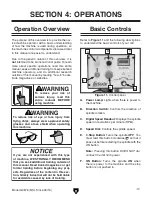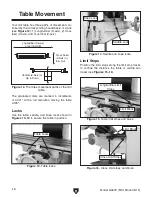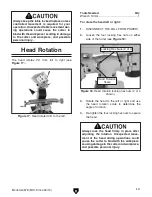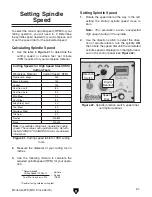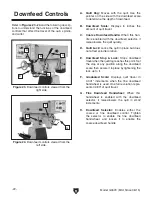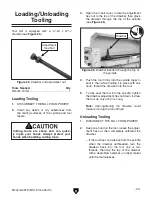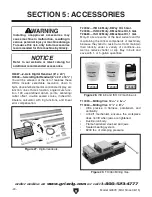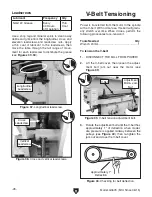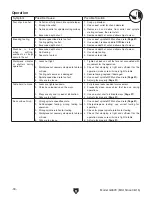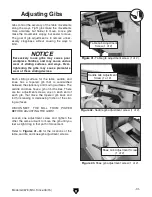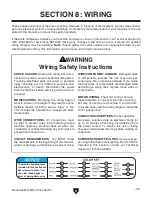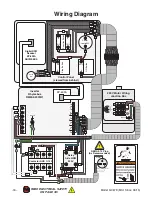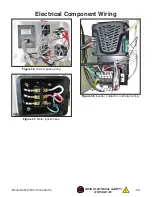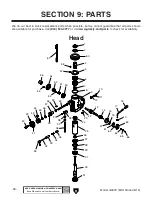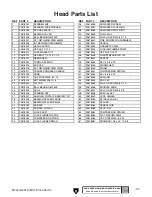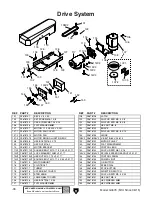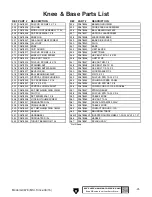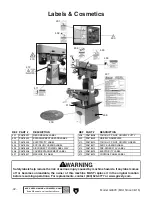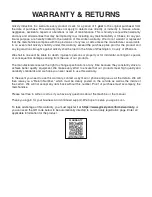
-30-
Model G0678 (Mfd. Since 06/15)
Operation
Symptom
Possible Cause
Possible Solution
Tool slips in collet.
1. Collet is not fully drawn into spindle taper.
2. Wrong size collet.
3. Debris on collet or spindle mating surface.
4. Excessive depth of cut.
1. Snug up drawbar.
2. Use correct collet for shank diameter.
3. Remove oil and debris from collet and spindle
mating surfaces, then re-install.
4. Decrease depth of cut and allow chips to clear.
Breaking tooling.
1. Spindle speed/feed rate too fast.
2. Tooling getting too hot.
3. Excessive depth of cut.
1. Use correct spindle RPM and feed rate (
Page 21).
2. Use coolant; reduce spindle RPM/feed rate.
3. Decrease depth of cut and allow chips to clear.
Machine is loud
when
cutting;
overheats or bogs
down in the cut.
1. Excessive depth of cut.
2. Dull tooling.
3. Feed rate too fast.
1. Decrease depth of cut and allow chips to clear.
2. Use sharp tooling.
3. Decrease feed rate.
Workpiece vibrates
or chatters during
operation.
1. Locks not tight.
2. Workpiece not securely clamped to table or
mill vise.
3. Tooling not secure or is damaged.
4. Spindle speed/feed rate too fast.
5. Gibs are too loose.
1. Tighten all locks on mill that are not associated with
movement for the operation.
2. Check that clamping is tight and sufficient for the
operation; make sure mill vise is tight to table.
3. Secure tooling; replace if damaged.
4. Use correct spindle RPM and feed rate (
Page 21).
5. Adjust gibs properly (
Page 31).
Table hard to move. 1. Locks are tightened down.
2. Chips have loaded up on the ways.
3. Ways are dry and in need of lubrication.
4. Gibs are too tight.
1. Fully loosen locks needed for movement.
2. Frequently clean away chips that load up during
operations.
3. Use one-shot oiler to lubricate ways (
Page 27).
4. Adjust gibs properly (
Page 31).
Bad surface finish.
1. Wrong spindle speed/feed rate.
2. Dull/damaged tooling; wrong tooling for
operation.
3. Wrong spindle rotation for tooling.
4. Workpiece not securely clamped to table or
mill vise.
5. Gibs are too loose.
1. Use correct spindle RPM and feed rate (
Page 21).
2. Sharpen/replace tooling; use correct tooling for
operation.
3. Check for proper spindle rotation for tooling.
4. Check that clamping is tight and sufficient for the
operation; make sure mill vise is tight to table.
5. Adjust gibs properly (
Page 31).


